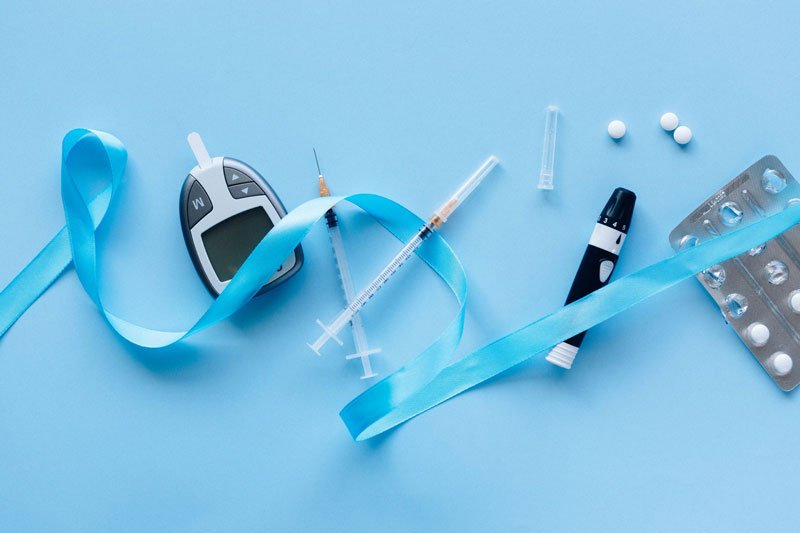In recent years, medical research has discovered an association between Fibromyalgia and Diabetes. A study carried out in Israel in 2003 noted that fibromyalgia is commonly found in people with diabetes. It is important to note that there were fewer instances of diabetics developing fibromyalgia when their diabetes was well controlled. In order to understand this connection, you will need to understand each of these chronic illnesses. You will find that many of the symptoms of fibromyalgia and diabetes overlap and mimic each other. This means, while you are fighting to keep one under control, the second could be in the background causing you problems that are being unaddressed.
What is Fibromyalgia?
Fibromyalgia is a chronic condition that causes tenderness, stiffness, and moderate to severe pain. It affects different parts of the body.
The cause of fibromyalgia is unknown, but experts suspect that fibromyalgia is the result of the brain and nervous system failing to process pain signals in a normal way. Researchers have also found deficient levels of serotonin in the nervous system and subsequent imbalance in a spinal fluid involved in pain signaling. They are also studying data that suggests people with fibromyalgia are often insulin resistant.
People often report that fatigue is the most bothersome aspect of fibromyalgia since it can affect mood, concentration, memory, and the ability to think clearly. This is why people with Fibromyalgia are often diagnosed with Chronic Fatigue Syndrome. Other symptoms may include the following:
● Headaches
● Joint disorders
● Depression
● Irritable bowel syndrome
● Poor circulation and tingling in the hands and feet
● Restless legs
● Urgent need to urinate
● Clumsiness
● Allergies

Photo Credit : Nataliya Vaitkevich
What is Diabetes?
Diabetes is a chronic disease that affects how your body turns food into energy. It is a hormonal and metabolic disorder. At this time there is no cure for diabetes, but there are treatment options.
Most of the food you eat is broken down into sugar (or glucose) and released into your bloodstream. When your blood sugar goes up, it signals your pancreas to release insulin. Insulin acts like a key to let the blood sugar into your body’s cells for use as energy.
If you have diabetes, your body either doesn’t make enough insulin or doesn’t use the insulin it makes properly. When there isn’t enough insulin or cells stop responding to insulin, too much blood sugar stays in your bloodstream. Over time, that can cause serious health problems, such as heart disease, vision loss, and kidney disease.
Control
Blood-glucose (sugar) monitor system
There is no question. You will have to monitor your medication, blood-sugar, and exercise for the rest of your life. This is now a fact of life for you. You will need a quality blood-glucose (sugar) meter. It will come in a kit, with a meter, lancing device, lancing needles, and blood-strips. These items are in a small zippered case to make them easy to transport.
Many of the highest-rated monitors on the market come from Ascensia Diabetes Care. They are the makers of the Contour line of meters and an industry leader. Ascensia has been in the business of research and development of diabetes for more than 70-years.
Bayer Contour Plus Reviews give this meter a very high rating. Here are some of the points favored:
● High quality
● Very nice and compact case
● Extremely accurate
● Low to no-cost
● Advanced technology
● Easy to see readings
● Easy to see display
Both fibromyalgia and diabetes tend to have higher levels of HbA1c indicating poorer glucose control. To control your blood-sugar, you will need to check your blood before each meal and anytime you feel the symptoms above.
You will need to eat a healthy diet. That means learning what each food you eat does in your body. Do some form of exercise every day. Even if it is just walking down the hall a few times, get up and move.
See your diabetes doctor often and tell him your concerns. There are medications he can give you to help.
The missing link
Finding the association between fibromyalgia and diabetes was surprising. Now that it is known that there are similarities in the body that tie the two, experts want to know what they are missing.
There are several new medications on the market for fibromyalgia. But one is not new and was not given to the fibromyalgia patient, but rather the diabetic patient. Metformin was given to a group of patients (500 mg) twice per day and they got as much as 50% pain relief! These patients were all pre-diabetic. But others have been given a lower dose, (500 mg) once per day and still had remarkable results.
If you are smart about your activities and accept that this is necessary to give you the best quality of life, then you’ve got it made. Until there is a cure, control is the best we can hope for.
That’s what this plan of action brings us. Control of pain and hope for tomorrow.







